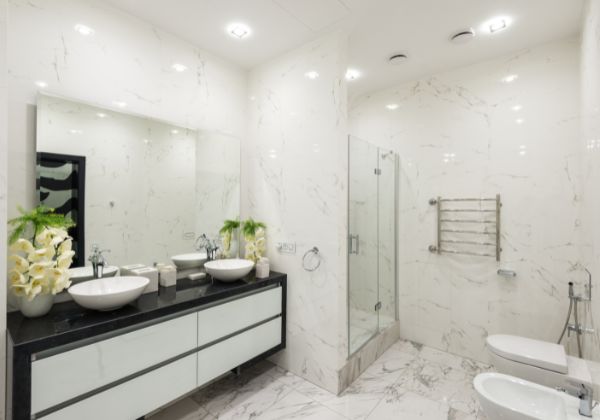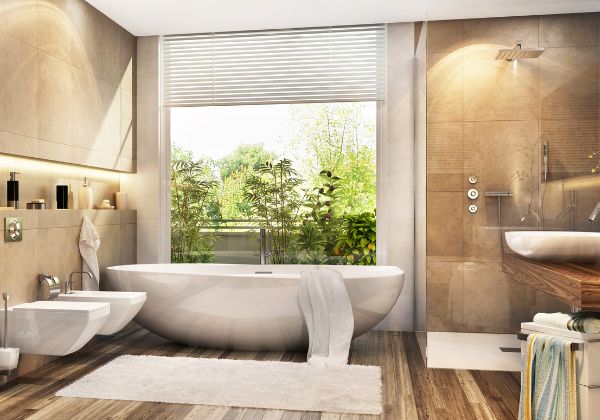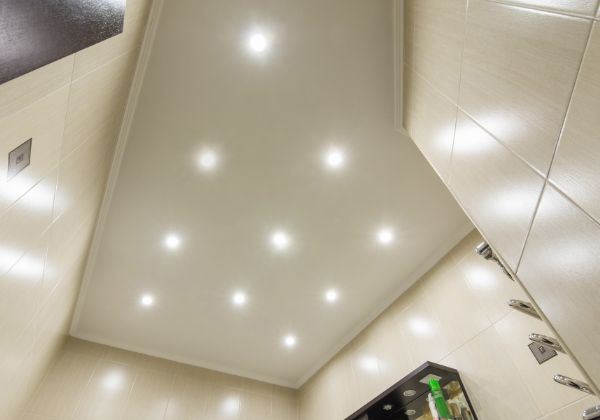The Ultimate Guide to Bathroom Lighting Planning and Selecting Tips
Proper bathroom lighting plays a crucial role in enhancing both functionality and style. Whether you’re starting from scratch or renovating, having a well-thought-out lighting plan is essential. This guide will provide an overview of bathroom lighting planning and tips for selecting the perfect light fixture to create the right ambiance and functionality in your space. From choosing the right bulb to layering various types of lighting, we’ll cover everything you need to know in this bathroom lighting guide for optimal illumination.

Why Proper Bathroom Lighting Matters
Bathroom lighting is more than just about brightening a space; it’s about creating a comfortable and safe environment that meets your specific needs. With the right lighting design, you can transform a basic bathroom into a functional and aesthetically pleasing area. In this section, we’ll discuss the importance of lighting in enhancing functionality, ensuring safety, and even increasing property value.
Enhancing Functionality and Ambiance
When it comes to bathroom lighting, balancing functionality and ambiance is key. Proper task lighting around the vanity ensures that daily grooming tasks like shaving or applying makeup are done with precision. Ambient light contributes to the overall mood of the bathroom, offering a relaxing retreat. Layer lighting by combining task, accent, and ambient light sources to illuminate the space effectively.
Safety Considerations in Bathroom Lighting
Safety is paramount when planning bathroom lighting. Bathrooms are wet areas, making it critical to choose light fixtures rated for damp or wet locations. IP (Ingress Protection) ratings help you understand which lights are suitable for specific zones, such as around the tub or shower. Choose the right fixtures that are moisture-resistant and properly grounded to prevent electrical hazards. In addition, sconces and recessed lights provide focused illumination without cluttering the space.
Increasing Property Value Through Lighting
Investing in quality bathroom lighting not only enhances your day-to-day experience but also boosts your home’s resale value. An updated lighting design that includes pendant lights or a chandelier in a well-appointed bathroom can appeal to potential buyers. The best lighting fixtures, including recessed lights and stylish vanity lights, contribute to a luxurious bathroom aesthetic that may even become a selling point.

Bathroom Lighting Planning: Steps for Success
Careful planning is essential when it comes to bathroom lighting. It’s not just about picking a pretty fixture; it’s about designing a system that functions well and enhances the space. From assessing your bathroom layout to selecting the right light for each area, we’ll guide you through the steps for successful bathroom lighting planning.
Assess Your Bathroom Layout and Size
The first step in planning is evaluating your bathroom’s layout and size. A small bathroom requires a different lighting approach than a larger, more spacious one. For example, overhead fixtures like a chandelier or ceiling light work well in larger spaces, while recessed lights can help optimize smaller bathrooms. Consider how natural light interacts with your bathroom layout during the day, and balance it with artificial lighting during the evening hours.
Choosing the Right Type of Lights for Each Zone
To properly light a bathroom, it’s important to divide it into zones. Each zone has different requirements in terms of illumination. Layering different types of lighting—task, ambient, and accent lighting—helps achieve a balanced lighting design that’s both functional and stylish.
Vanity Lighting
Vanity lighting is critical in bathrooms. Whether you use sconces or overhead lights, ensure the vanity area is well-lit for grooming tasks. Vanity light fixtures positioned on either side of the mirror or overhead provide task lighting without casting harsh shadows. Vanity lights not only help illuminate but also add a decorative touch.
Shower and Bathtub Lighting
Shower and tub areas need specific lighting solutions due to their moisture levels. Recessed lights with a high IP rating are ideal for these wet zones. This type of lighting ensures you have the right amount of task lighting for visibility while enhancing the ambiance.
Ceiling and General Lighting
Ceiling and general lighting, such as overhead light fixtures, are essential for providing full-room illumination. Flush mounts, recessed lights, or even pendant lights work depending on your space and design aesthetic. Ceiling light fixtures act as the main light source and create a foundation for other types of lighting, such as accent or task lighting.
Considering Natural Light and Its Effect on Bathroom Lighting
Natural light plays a significant role in your bathroom’s overall lighting scheme. During the day, it can provide plenty of brightness, reducing the need for artificial lighting. However, you’ll need to consider how to complement natural light with artificial sources during dim or evening hours. By strategically placing fixtures, you can ensure consistent illumination throughout the day.
Safety and Electrical Considerations (IP Rating and Voltage)
Understanding IP ratings and voltage requirements is crucial when installing bathroom lighting. This ensures safety in damp areas, particularly in zones near the shower, tub, or vanity. Choose the right fixtures that meet safety standards, including light bulbs rated for damp locations.

Bathroom Lighting Selection Tips
Choosing the right bathroom lighting involves a mix of practical considerations and personal preferences. From selecting the right bulbs to matching the fixtures with your décor, these tips will help you make the best lighting choices for your bathroom.
Selecting the Right Bulbs
Brightness and Color Temperature
When selecting a bulb, consider its brightness and color temperature. A color temperature of around 3000K to 4000K offers a natural light appearance, ideal for bathroom tasks. You’ll also want to ensure the brightness level is high enough to provide clear visibility without being too harsh.
Energy Efficiency (LED vs. Traditional Bulbs)
LED bulbs are an energy-efficient option that can last up to 25 times longer than traditional incandescent bulbs. Not only do they consume less power, but they also produce less heat, making them perfect for bathroom spaces.
Choosing the Perfect Fixtures
Design Aesthetics and Styles
Your choice of light fixture can enhance your bathroom’s overall style. Modern designs may include sleek pendant lights or minimalist sconces, while more traditional designs might favor ornate chandeliers or vintage overhead fixtures.
Durable Materials for Bathroom Lighting
Bathrooms are exposed to moisture, so it’s important to choose fixtures made from durable materials. Stainless steel, glass, and moisture-resistant metals ensure that your light fixtures will stand the test of time.
Enhancing Ambiance with Dimmers and Smart Lighting
A dimmer switch allows you to control the brightness of your bathroom lights, providing flexibility in creating the right ambiance. Dimmers work especially well with overhead and accent lighting. Smart lighting options allow you to adjust your bathroom’s lighting remotely, adding a layer of convenience and customization.
FAQs
What are the key areas to focus on when planning bathroom lighting?
Focus on task lighting for the vanity, ambient light for general illumination, and accent lighting for added style.
How do I choose the right brightness and color temperature for bathroom lighting?
Opt for 3000K-4000K for warm, natural light and adjust brightness levels to avoid glare.
Can I use the same type of lighting throughout the entire bathroom?
No, it’s best to layer lighting, using different fixtures like recessed lights for task areas and pendant or chandelier fixtures for general lighting.
How do I match bathroom lighting fixtures with my bathroom’s décor?
Consider the style, color, and finish of your light fixtures to complement your bathroom vanity and overall design.
What is the recommended height for placing sconce or wall-mounted lights?
Sconces should be mounted at about eye level, around 65 to 70 inches from the floor.
Conclusion
Effective bathroom lighting combines style, functionality, and safety. By following the bathroom lighting selection tips and steps outlined in this complete guide, you’ll be able to create a well-lit, welcoming space. If you're looking to streamline your bathroom renovation, Remodel Your Home offers expert tips and connects you with bathroom remodeling professionals who can help you achieve the best lighting solutions for your space, on time and within budget.

Remodel Your Home
We are a leader in the home improvement space with over 20 years of experience pairing homeowners with construction experts.
About Us